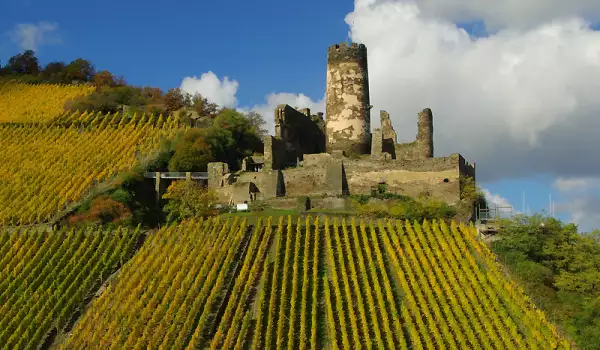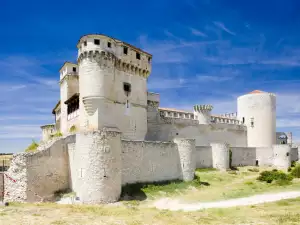Furstenberg Castle

Rhine River in Germany is one of the most popular tourist destinations. Daily cruises go on the river carrying dozens, even hundreds of tourists from around the world, lured by picturesque scenery, heritage and culture that you see on the palm of every corner of the river flow. Starting from Koblenz, along the Rhine opens in front of you eyes a beautiful castle, followed by another and seemingly so on to infinity. Castles on the Rhine are perched on the cliffs, surrounded by romantic hills of the valley, among vineyards, forests and fertile meadows.
One such boat from the German towns of Bingen and Rüdesheimer to Bacharach lasts shortly, but allows visitors to touch the old Germany, in the southwestern German state of Rhineland-Palatinate. The ship passes through Lorchhausen, Lorch and the fortress Nollig, on the left bank of the Rhine, which is now buried in ruins. Most visitors take a climb called "Devil's Ladder", which takes them to the ruined castle.

Almost immediately after Noling, on the opposite bank of the river sees another half-destroyed castle, dominated by the rugged bastion - Castle Furstenberg , who is in the hills right on the beach. Further, Furstenberg is followed by the castle Heimburg, built after 1290 by the Archbishop of Mainz and a former Roman fort. Followed by Niederheimbach, surrounded by three castles in ruins - north of the fortress Furstenberg and south of Castle Sooneck.
Furstenberg Castle stands proudly on its hill, and at the foot of the town Rheindiebach. As the year of the rise of the medieval fortress is taken to be 1219. Furstenberg is built on the orders of the Archbishop of Cologne, who wanted to protect their property. Twice - in 1620 and in 1632, the castle Furstenberg is consistently fascinating to the Spaniards and Swedes.
End of the strongest years for the Furstenberg castle comes during the Palatine war, for the weight of the French army, under which it literally collapsed.
Among the interesting things that can be seen today in Furstenberg are the fortified wall, a round protection of the fort and the remains of a residential area. And still, it managed to retain part of the medieval colored plaster walls.
Among the interesting castles in the region along the Rhine and Moselle, the castles are Klopp Castle, Castle archbishops, Marksburg Castle, Drachenfels Castle, Maus Castle, Ehrenfels Castle, Reichenstein Castle, Ehrenbreitstein, Rheinfels Castle, Godesburg Castle, Gutenfels Castle, Stahleck Castle, the Stolzenfels Castle and many others.














